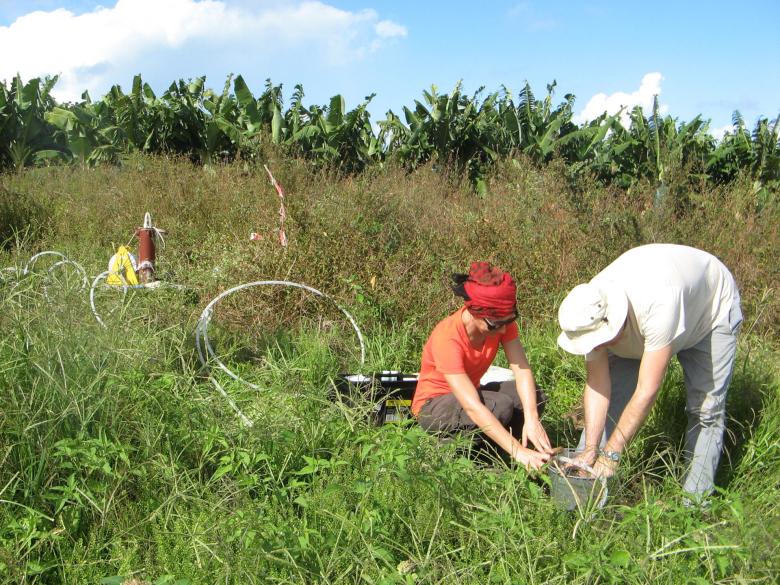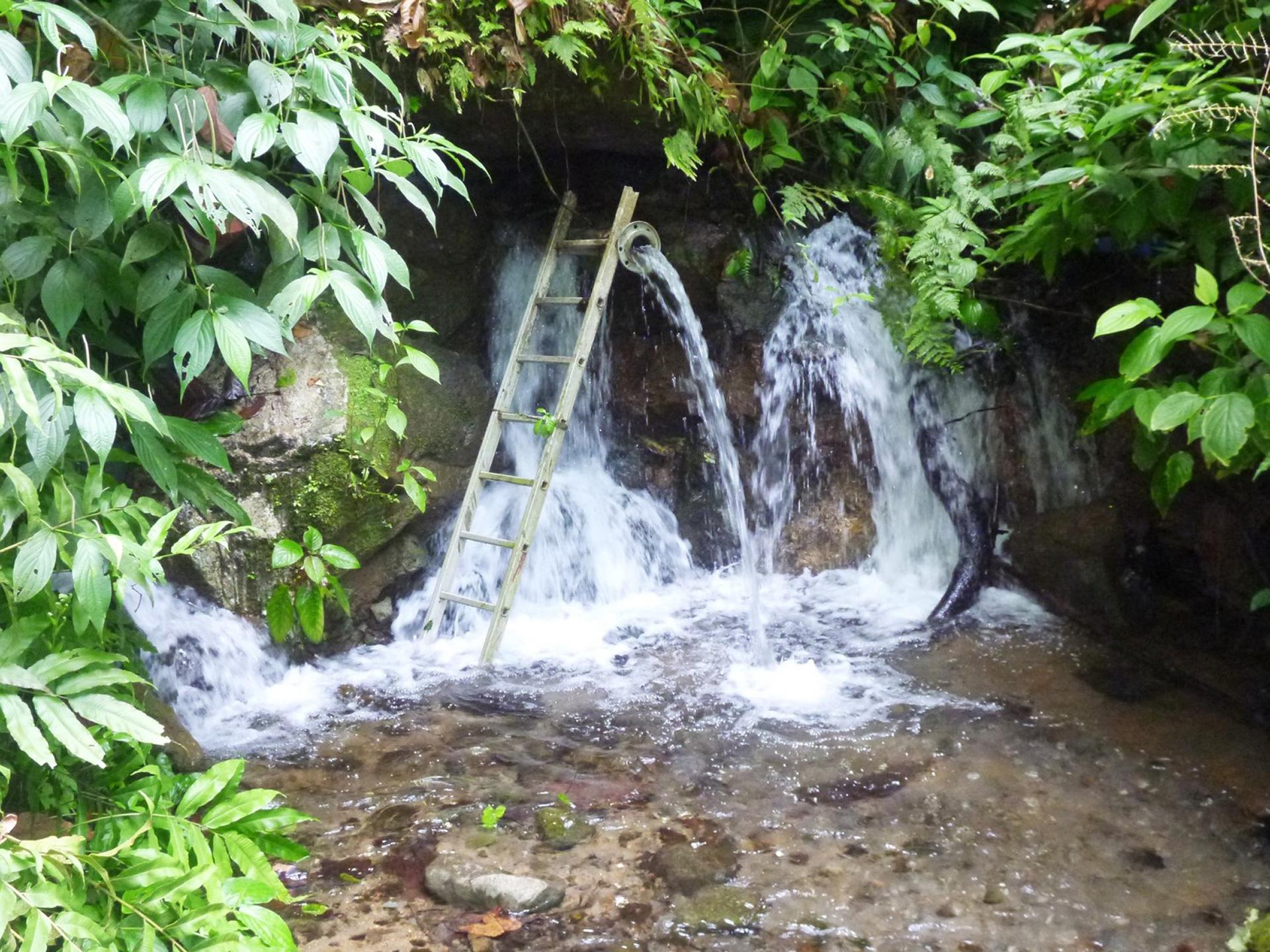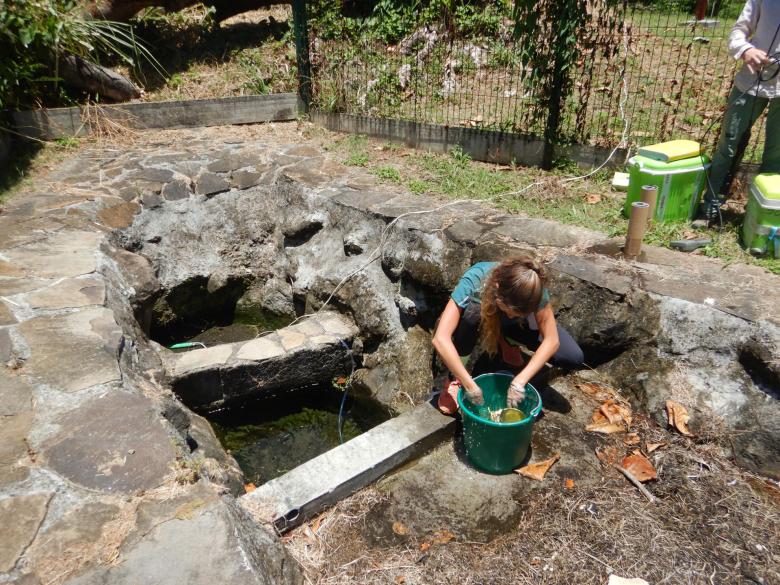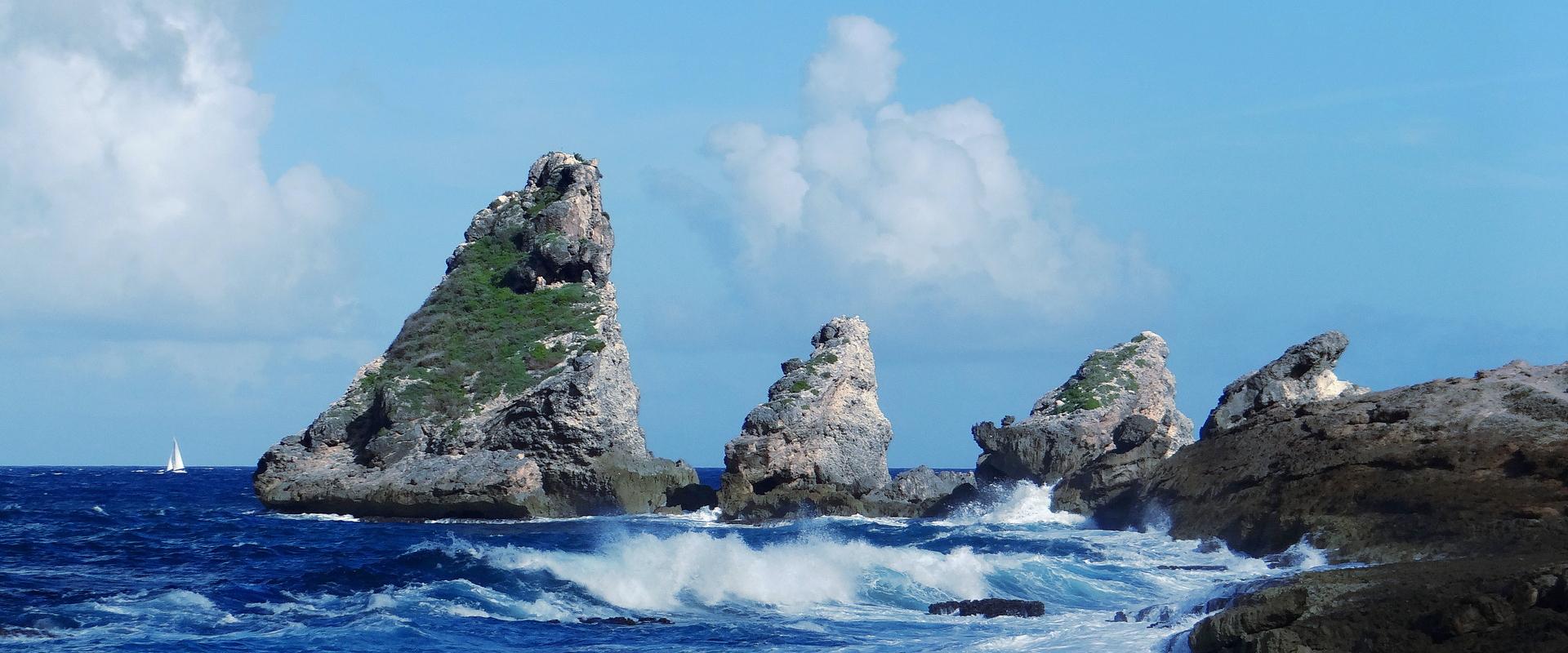
Sampling of water from an OPALE observatory borehole for physico-chemical and pesticide analyses (Capesterre-Belle-Eau, 2017)
© BRGM - J.-B. Charlier
The need
Groundwater is an "invisible" vector for dispersing pollutants into the various environmental compartments. It is used directly (or indirectly through the associated surface water sources) for drinking water and irrigation purposes. The references acquired on the dispersion of pesticides in the environment mainly concern temperate environments, so there was no available model to represent the dispersion of pesticides in groundwater suited to the peculiarities of the West Indies tropical volcanic environment.
The results
The work carried out by BRGM as part of the RIVAGE (shoreline) project shows the significant contribution of underground transfers to the process of polluting river and coastal waters, linked to the state of soil pollution. The high permeability of volcanic soils in the West Indies facilitates the transfer of rainwater to groundwater, the behaviour of which is complicated by the layering of lava flows. Within aquifers, variable residence times (from a few years to several decades) have been estimated, leading to a long-term impact on watercourses supplied by groundwater.
These results provide a new insight into pesticide pollution of groundwater and surface water. In the case of chlordecone, which was used extensively in banana plantations between 1970 and 1993, modelling has shown that part of the soil stock migrates to groundwater; this in turn becomes a source of pollution for inland ecosystems (rivers, springs) and marine ecosystems, possibly with some delay.

OPALE, the Observatory of Agricultural Pollution in the French West Indies, which has been run by BRGM and its partners since 2012, monitors changes in agricultural practices and the transfer of pesticide contamination — including chlordecone — to both surface and groundwater. These data, which can be used to initiate cooperative approaches and encourage the involvement of local players in the co-design of individual and collective solutions, have been widely exploited as part of the RIVAGE project.

Sampling of water from a roadside spring for physico-chemical and pesticide analyses (Capesterre-Belle-Eau, 2022)
© BRGM - J.-B. Charlier
Using the results
This work reveals that it is necessary to take underground flows into account when investigating the medium- to long-term impact of pesticides in tropical volcanic basins. Aquifers appear to be major sources of pollution that should be given greater consideration in health and ecotoxicology studies. This study therefore opens up new prospects for improving long-term forecasting of water pollution and the fate of molecules in the French West Indies environment.
The partners
- CIRAD - GECO, Guadeloupe
- INRA - ASTRO, Guadeloupe & LISAH Montpellier
- University of the French West Indies and Guiana - COVACHIM / LAMIA Guadeloupe






